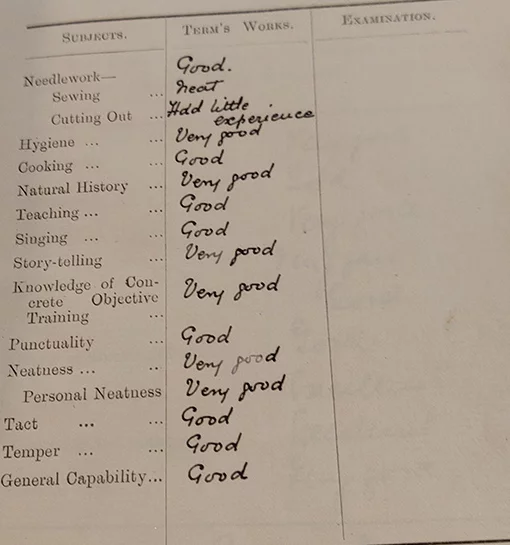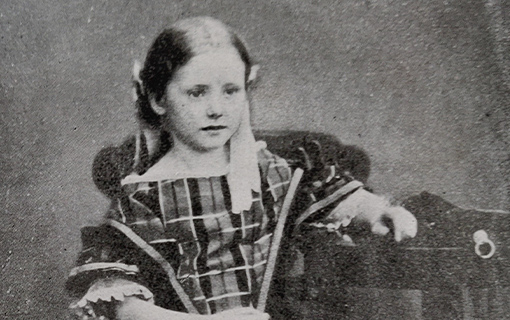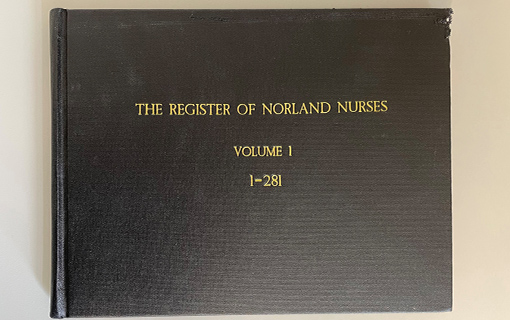The history of Norland in 13 objects: one of the first nurse testimonial books from 1892
8 June 2022

The third object in our series celebrating the 130-year history of Norland through 13 objects, is one of the first nurse testimonial books containing entries from 1892 until 1901.
The slim, worn leather-bound testimonial book belonged to Nurse Christine Tisdall, one of the very first probationers to enter the ground-breaking Norland Institute at the age of 18 on 25 September 1892. It records her testimonial reports from Norland, her hospital placement, and her employers, as well as her Norland certificate. The testimonials date from December 1892 until August 1901.
Nurse Tisdall is depicted in the far right of the photograph of the first probationers to enter Norland in 1892.
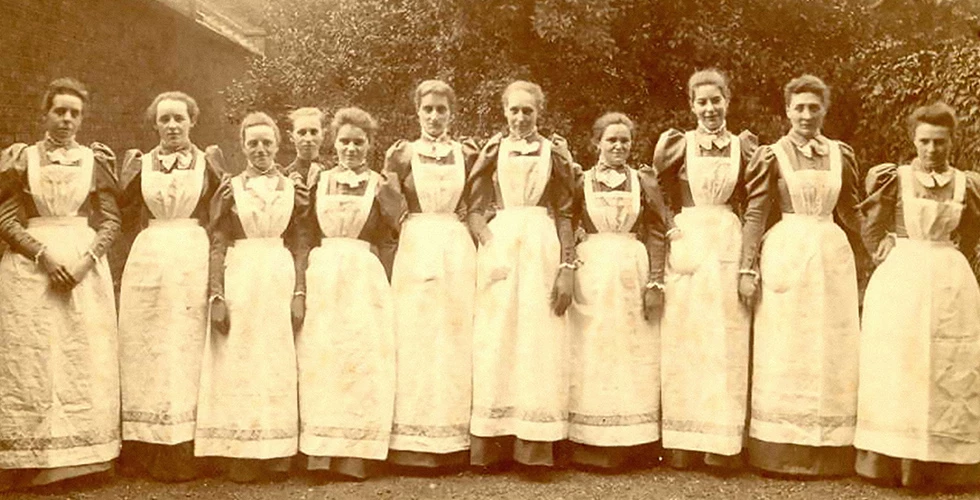
Bound in black leather with a gold-embossed front and marbled endpapers, testimonial books provide a detailed record of each nurse’s training, their aptitude for various aspects of the training and their employment. The books also note the Institute’s mission and detail the rules laying out the working conditions for nurses including their uniform. They provide an invaluable record of how the training and uniform were altered at different points in Norland’s history, as well as a fascinating insight into the employment records of the first Norland nurses.
Nurse Tisdall’s testimonial book details the aims of the Norland Institute to “offer a new career to ladies” and “supply the public with women fitted by character and training to take charge of nurseries and little children”. Here we see the revolutionary nature of the Norland Institute in setting out the establishment of a new profession for women trained to lead the care, education and development of babies and young children within the family setting.
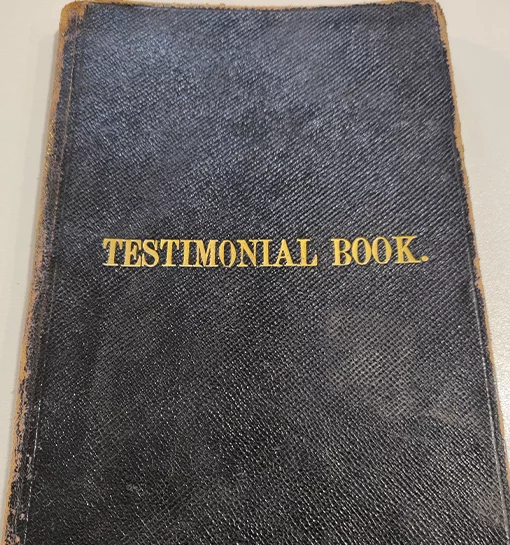
Reinforcing their professional status within the household, the books lay out 11 rules for employers. They require that the nurse should not eat with the servants, nor (for hygiene reasons) were they to take their meals in the nursery bedrooms. Nurses were not to be asked to scrub floors, clean grates, or carry coals. Their employer was asked to cover the costs of their laundry, and for their travel to commence their employment.
Norland nurses were to be given the title Nurse, adding if preferred their first name or surname. There were also stipulations concerning holidays (one month in total to be taken each year at the convenience of the employer), the payment of salaries, opportunities for daily exercise and Sunday worship.
The eleventh rule details the uniform to be worn on all occasions when on duty. In 1892, the uniform comprised a black or grey bonnet and cloak (according to season), a blue beige dress, a pink and white-striped Galatea dress for morning or heavy work (hence Norland nurses were known as “pinkies” in the early days), white linen aprons, white ‘Coventry Frilling’ tuckers for neck and sleeves, white cambric ties for indoors, red ties for Galatea dresses, and white woollen or cotton gloves. The image shows Nurse Christine Tisdall in her full indoor uniform in 1892.
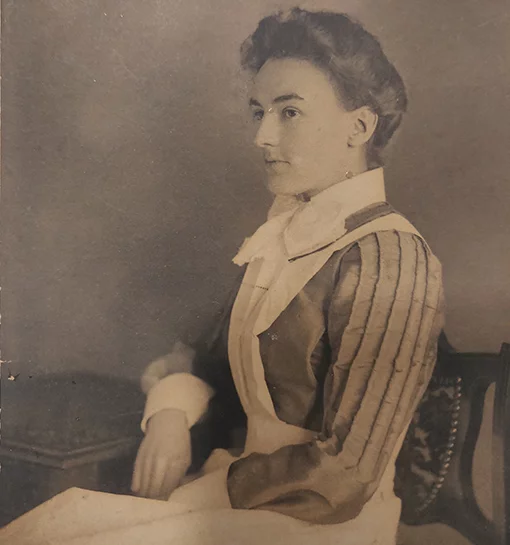
Norland training in 1892 was made up of three terms, each of three months duration, in the Institute, in a hospital and with a family.
The first term of studies at Norland included “Hygiene, Needlework, useful Nursery Knowledge and instruction in the training of the character and intellect on Froebelian Principles”. Entries by Emily Ward note how well each nurse has worked at each subject, which range from sewing to cooking, natural history and teaching through to singing and storytelling, as well as professional skills such as punctuality, neatness, tact and temper. There is an overall entry for general capability.
While on placement, probationers would gain practice in “the handling of children, attending to small ailments, and noticing signs of illness”. While with a family, the Probationer “brings her knowledge to the test of private family life and learns how to adapt what she knows to special and individual cases”.
At the end of her first term of training on 17 December 1892, Christine Tisdall’s aptitude for each subject is noted by Emily Ward as “good” or “very good” with her overall capability given as “good”. On 10 April 1893, Christine Tisdall receives competency reports ranging from “very fair” to “excellent” from the matron overseeing her second term of training, which was a placement at the Children’s Convalescent Hospital in Bushey Heath. The testimonial from her third term on a family placement in Brunswick Gardens, dated 20 November 1893, ranges from “fair” to “very good” with strengths in cleanliness, temper and tact. Her general capability has progressed to “very good”. The satisfactory completion of her training leads to Christine Tisdall’s certification as a Norland Nurse on 7 December 1893.
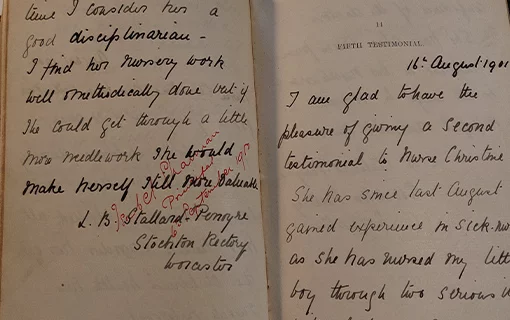
The testimonial book includes a note to employers that the certificate “is the result of nine months’ observation; it is neither inclusive nor decisive”. Employers are encouraged to “look out for fresh virtues rather than intensified failings” in order to ensure the testimonial book provides “a valuable record of the development of character in a useful and honourable career”.
The subsequent pages are dedicated to employer testimonials. Nurse Tisdall’s book records five family testimonials from her first role of one month’s duration as holiday cover for a permanent nurse through to a role lasting over two years.
One report, from a family in Edinburgh in 1895, reflects how novel the notion of a trained nursery nurse was at the time, noting:
“It was with some anxiety that we decided on the experiment of choosing a Norland nurse. It seemed too much to hope that anyone could perform the duties of a servant in the spirit of a lady and without causing friction in the household, but your friendliness and beautiful humility have made things easy”.
Several of the early testimonials are concerned with ill health. In her role with a family in Worcester, Nurse Tisdall gains experience nursing the family’s little boy through two serious illnesses in 12 months. Her final employer testimonial, dated August 1901, notes that she tends the young boy with “great care, managing him with tact and gaining the confidence of the doctors.”
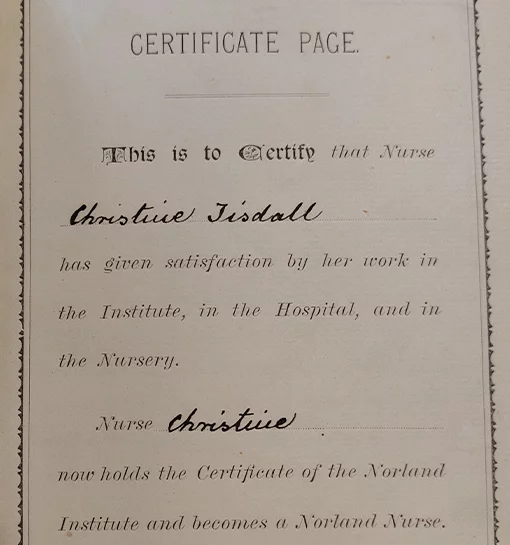
Before the introduction of formal examinations, the testimonial books offered the only evidence of the Norland qualification. While some testimonial books may only run to a handful of entries, other nurses’ records run to three or more of these slim volumes reflecting a lifelong career dedicated to caring for young children. In later years, the leather was replaced with cheaper bindings, eventually becoming paperback booklets before their replacement in the 1950s with centrally managed training and employment records.
The archives contain numerous testimonial books spanning the 60 years they were in use. They provide a rich record of the first decades of Norland’s 130 years at the forefront of childcare training, education, and employment.
